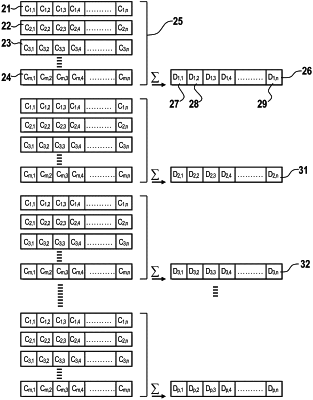| CPC G01S 13/9023 (2013.01) [G01S 13/9076 (2019.05)] | 9 Claims |

|
1. CHARTING AND SURVEILLANCE RADAR carried by an UAV (unmanned aerial vehicle) flying in a determined flight path, comprising operation using a synthetic aperture radar (SAR) interferometric technique, with a pulse repetition rate (PRF) of transmitted radar pulses in a range of 100 kHz to 225 kHz and with a peak power between 1 milliwatt and 1 watt, a yaw of the UAV being compensated by use of lobes with a beamwidth of up to 70° in azimuth, and a selection of backscattered signals in a direction perpendicular to a line of flight of the UAV being provided by filtering the backscattered signals;
wherein a Doppler shift between frequencies of emitted signals and the backscattered signals falls within a 150 Hz bandwidth centered in Doppler-zero;
wherein each backscattered signal pulse comprises a plurality of n data cells in the time domain, with a first cell being closest to a radar antenna of the UAV and an nth cell being farthest from the radar antenna; and
wherein data that are recorded in solid state mass memories comprise output lines from adder circuits, each output line including n cells, a first cell of a first output line being a sum of first range cells of the backscattered signal pulses, and so on for the second, third and further recorded output lines, thereby reducing a data rate of the recorded data.
|